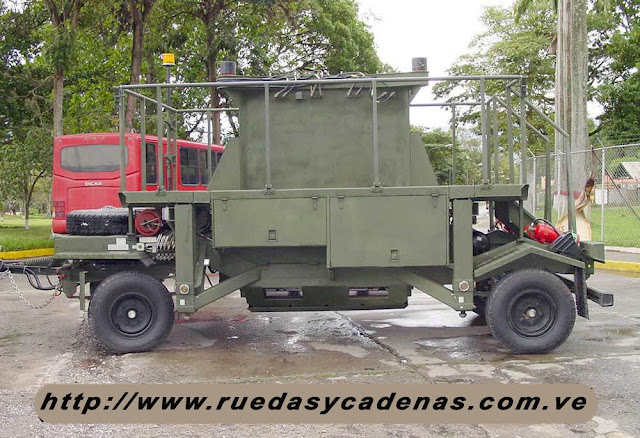By Stijn Mitzer and Joost Oliemans
Despite investing tens of billions of USD into its Armed Forces over the past two decades, Venezuela is curiously left with a military that is significantly weaker than before these investments were made. This spectacular feat is not only the result of highly peculiar procurement decisions, but also due to the fact that the Venezuelan Armed Forces of the late 1990s was in fact among the most powerful in South America. For years procuring modern armament from sources like the United States, France and Israel, these countries were replaced by Russia, China and Iran after the United States imposed an arms embargo against Venezuela in 2006 because of President Hugo Chávez's policies.
Was Venezuela still able to procure advanced armament from the West prior to 2006, from that year onwards the country almost exclusively turned to Russia to satisfy its defence needs and replace equipment that was no longer operational due to a lack of spare parts, which could no longer be easily acquired from the West. Intriguingly, Venezuela immediately purchased large numbers of older T-72B1 MBTs and S-125 SAM systems from Russia. Though later also acquiring more advanced systems like the Buk-M2 and S-300V, it's interesting to note that several of the weapons systems purchased were arguably less capable than the equipment they were intended to replace.
One of the systems that was in need of replacement due to the sudden lack of support was the Israeli-made Barak-1 ADAMS surface-to-air missile (SAM) system purchased brand-new from Israel in 2005. Three of these 8-cell launchers were acquired to replace the French Roland-2 SAM systems in service with the Comando de Operaciones de Defensa Aérea, or CODA in short, a separate service from the Venezuelan Air Force that was tasked with defending air bases and other high-value facilities that might succumb to air attacks during a possible war or coup attempt. As elements of the Venezuelan Air Force played a pivotal role in the November 1992 coup d'état attempt, attacking loyalist air bases with fighter jets and attack aircraft, the importance of air base defences was self-evident to the Venezuelan military.
 |
A putchist OV-10 Bronco crashes to the ground after just having been gunned down by a loyalist F-16 during the November 1992 Venezuelan coup d'état attempt. Footage from the dramatic event can be watched here. |
 |
A Barak-1 missile canister is in the process of being loaded into its 8-cell launcher. |
In CODA service, the Barak-1s replaced the Guardian air defence system previously in use, which consisted of the Roland-2 SAM system and radar-guided 40mm Oto Melara 40/L70 cannons paired to a Flycatcher Mk.1/2 fire-control radar. In addition to the CODA, the Venezuelan Army maintained its own arsenal of air defence systems. These consisted of 40mm Bofors AA guns, and AMX 13 S533 and AMX-13M51 Ráfaga self-propelled anti-aircraft guns (SPAAGs). Since their retirement at the turn of the decade, the Venezuelan Army no longer possesses SPAAGs, instead bringing into service the S-125 Pechora 2M, Buk-M2 and S-300V SAM systems acquired from Russia.
 |
A 40mm Oto Melara 40/L70 AA gun formerly operated by the CODA. This gun system uses the same turret as the one found on a wide range of naval ships. |
 |
The first (and last) sighting of the Barak-1 in Venezuela during the 195th anniversary of independence parade in 2006. |
Special thanks to FAV-Club.

.png)







